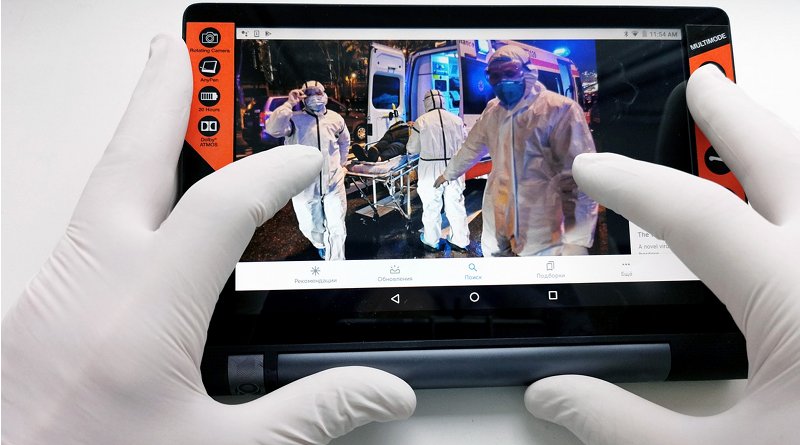Yan Report’s Claims SARS-CoV-2 Created In Chinese Lab Are Misleading, Unethical
The MIT Press Journal Rapid Reviews: COVID-19 (RRC:19) has openly published the first official scholarly peer reviews of pre-print research from Li-Meng Yan, Shu Kang, Jie Guan, and Shanchang Hu that claims to show that unusual features of the SARS-CoV-2 genome suggest sophisticated laboratory modification rather than natural evolution. Reviewers Robert Gallo, Takahiko Koyama, and Adam Lauring rate the study as misleading and write that the “manuscript does not demonstrate sufficient scientific evidence to support its claims.”
Find peer reviews and information about this study at Rapid Reviews website.
While this research has been widely debunked in popular media, scholarly peer review represents a different type of rebuke from the scientific community. The original study was posted on a public pre-print server without the benefit of peer review–a necessary part of the scientific publishing process in which scientists review one another’s work, vetting research for accuracy and evaluating methods and evidence. Pre-prints enable researchers to share information quicker, but they have created a need for rapid and transparent peer review to correct misinformation about COVID-19 and to minimize the influence of unverified research.
“While pre-print servers offer a mechanism to disseminate world-changing scientific research at unprecedented speed, they are also a forum through which misleading information can instantaneously undermine the international scientific community’s credibility, destabilize diplomatic relationships, and compromise global safety,” explains the RR:C19 Editorial Office.
RR:C19 was launched in June 2020 to provide rapid and transparent peer review of COVID-19 pre-prints. When the ‘Yan Report’ was published in September, RR:C19 quickly sought out peer reviews from world-renowned experts in virology, molecular biology, structural biology, computational biology, vaccine development, and medicine.
These reviews are now openly published, along with a response from the RR:C19 Editorial Office, that states, “Collectively, reviewers have debunked the authors’ claims that: (1) bat coronaviruses ZC45 or ZXC21 were used as a background strain to engineer SARS-CoV-2, (2) the presence of restriction sites flanking the RBD suggest prior screening for a virus targeting the human ACE2 receptor, and (3) the furin-like cleavage site is unnatural and provides evidence of engineering. In all three cases, the reviewers provide counter-arguments based on peer-reviewed literature and long-established foundational knowledge that directly refute the claims put forth by Yan et al. There was a general consensus that the study’s claims were better explained by potential political motivations rather than scientific integrity.”
Reviewer Dr. Robert Gallo, biomedical researcher and co-founder of The Institute of Human Virology Evidence Scale Rating: Misleading “Widely questionable, spurious, and fraudulent claims are made throughout the paper about the thought-to-be precursor of SARS-2, RaTG13, found in bat caves. The author’s attacks include quotes which have not been referenced, including how this ‘has been disputed and its truthfulness widely questioned. Soon a paper proving that will be submitted.’ She then goes on to attack several genome sequences as fraudulent, ranging from pangolin coronaviruses to bat coronaviruses, again without evidence. The reference she cites for that, in fact, does not make that claim.”
Reviewer Dr. Takahiko Koyama, IBM Research, Computational Biology Center Evidence Scale Rating: Misleading “[The] authors’ speculation of furin cleavage insert PRRA in spike protein seemed quite interesting at first. Nevertheless, recently reported RmYN02 (EPI_ISL_412977), from a bat sample in Yunnan Province in 2019, has PAA insert at the same site[2]. While the authors state that RmYN02 is likely fraudulent, there are no concrete evidences to support the claim in the manuscript. In addition, argument of codon usage of arginine in PRRA is not convincing since these are likely derived from some kind of mobile elements in hosts or other pathogens. Further investigations are necessary to unravel the mystery of the PRRA insert. For these reasons, we conclude that the manuscript does not demonstrate sufficient scientific evidences to support genetic manipulation origin of SARS-CoV-2.”
Reviewer Dr. Adam Lauring, University of Michigan, Internal Medicine Evidence Scale Rating: Misleading “A key aspect of research ethics and the responsible conduct of research is to include information on who supported the work – financially or otherwise. The authors’ affiliation is the “Rule of Law Society & Rule of Law Foundation.” It is not clear who supports this Foundation or what its purpose is. It is important for there to be transparency regarding research support, especially for a manuscript that is based on conjecture as opposed to data or empiricism. It is also unethical to promote what are essentially conspiracy theories that are not founded in fact.”

